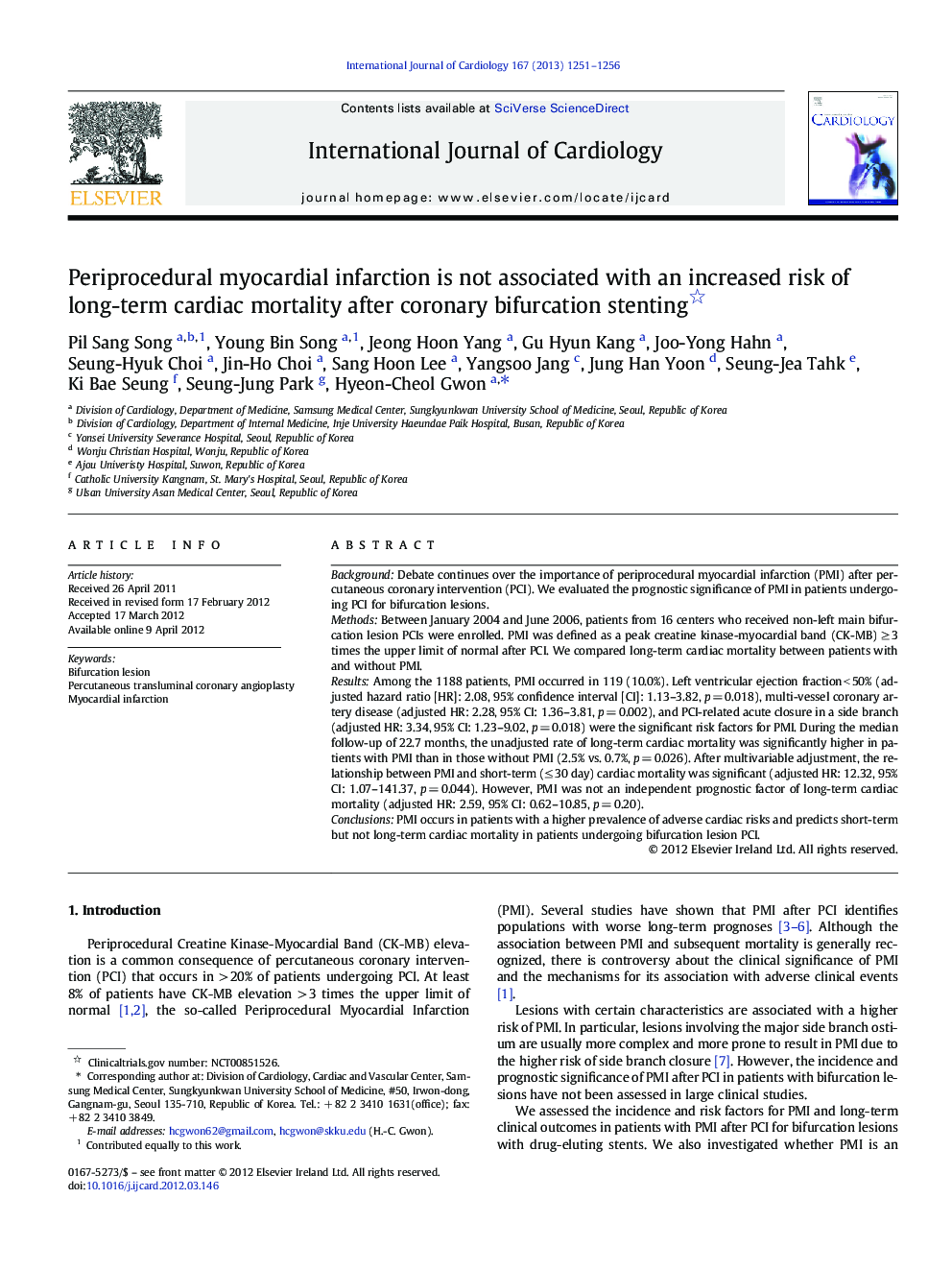| Article ID | Journal | Published Year | Pages | File Type |
|---|---|---|---|---|
| 5975483 | International Journal of Cardiology | 2013 | 6 Pages |
BackgroundDebate continues over the importance of periprocedural myocardial infarction (PMI) after percutaneous coronary intervention (PCI). We evaluated the prognostic significance of PMI in patients undergoing PCI for bifurcation lesions.MethodsBetween January 2004 and June 2006, patients from 16 centers who received non-left main bifurcation lesion PCIs were enrolled. PMI was defined as a peak creatine kinase-myocardial band (CK-MB) â¥Â 3 times the upper limit of normal after PCI. We compared long-term cardiac mortality between patients with and without PMI.ResultsAmong the 1188 patients, PMI occurred in 119 (10.0%). Left ventricular ejection fraction < 50% (adjusted hazard ratio [HR]: 2.08, 95% confidence interval [CI]: 1.13-3.82, p = 0.018), multi-vessel coronary artery disease (adjusted HR: 2.28, 95% CI: 1.36-3.81, p = 0.002), and PCI-related acute closure in a side branch (adjusted HR: 3.34, 95% CI: 1.23-9.02, p = 0.018) were the significant risk factors for PMI. During the median follow-up of 22.7 months, the unadjusted rate of long-term cardiac mortality was significantly higher in patients with PMI than in those without PMI (2.5% vs. 0.7%, p = 0.026). After multivariable adjustment, the relationship between PMI and short-term (â¤Â 30 day) cardiac mortality was significant (adjusted HR: 12.32, 95% CI: 1.07-141.37, p = 0.044). However, PMI was not an independent prognostic factor of long-term cardiac mortality (adjusted HR: 2.59, 95% CI: 0.62-10.85, p = 0.20).ConclusionsPMI occurs in patients with a higher prevalence of adverse cardiac risks and predicts short-term but not long-term cardiac mortality in patients undergoing bifurcation lesion PCI.
